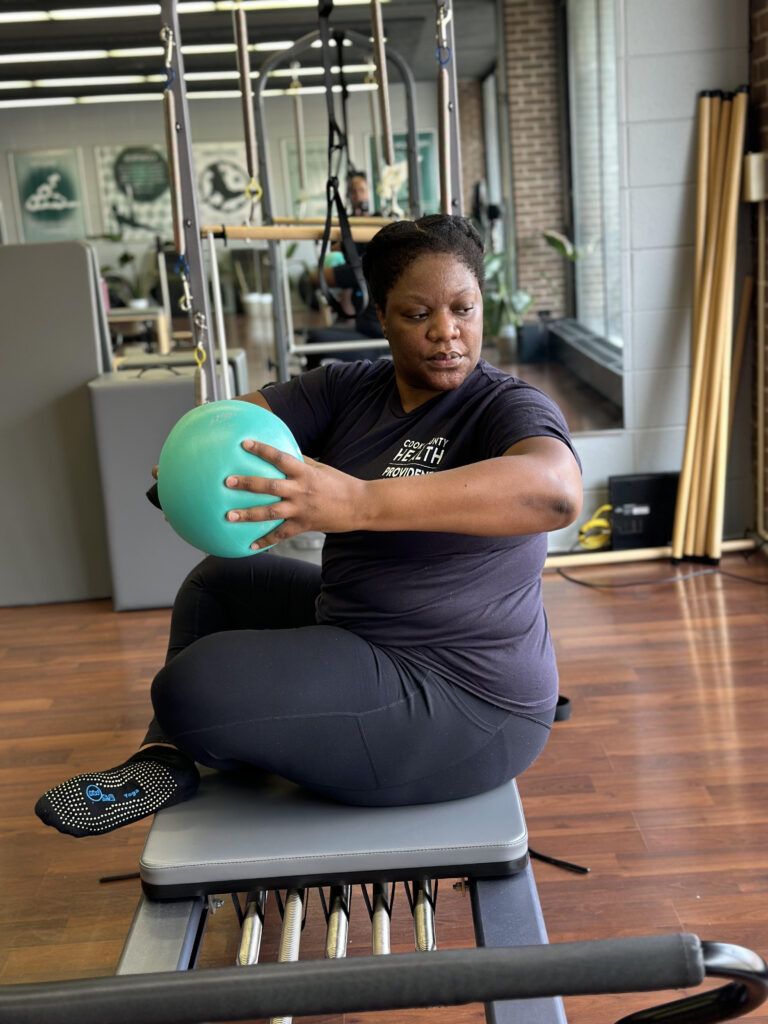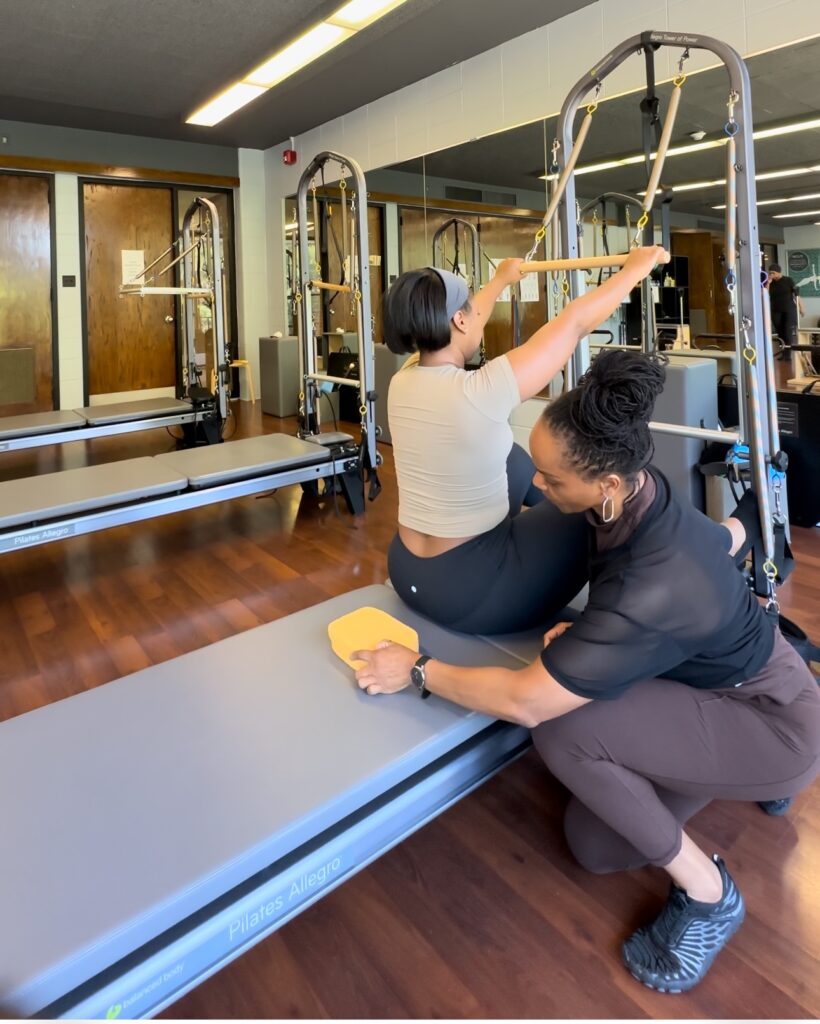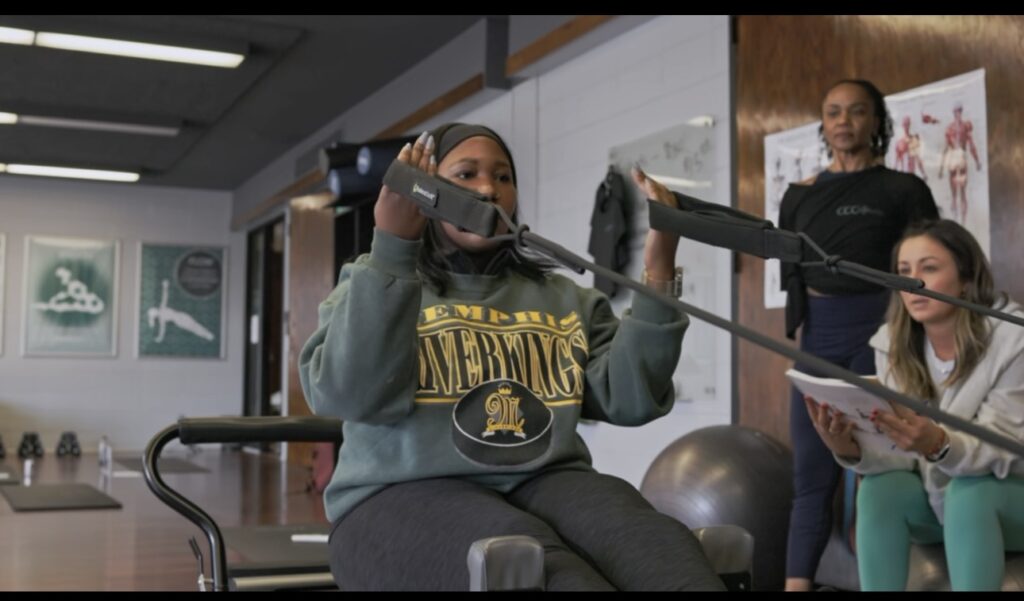Issue #451
Wednesday, February 5, 2025
Honoring EveryBODY: The Power of Embracing Diversity in Pilates Teaching
by Tabatha Russell
As a Black woman with over 25 years of experience teaching Pilates, I’ve seen how powerful and transformative this method can be. But I’ve also had to navigate challenges that come with teaching diverse bodies—especially those that weren’t the “norm” when Joseph Pilates developed his method over a century ago. Early in my career, I quickly realized that the Pilates method and its apparatus weren’t always designed with Black men and women’s bodies in mind. This reality shaped my approach, pushing me to adapt and innovate to meet my clients’ needs, and ultimately deepened my understanding of why diversity is essential in Pilates.
When I began teaching, most of my clients were Black men and women, and their bodies often didn’t fit the standard molds for Pilates equipment. Some clients had more pronounced muscular builds, broader frames, or different postural tendencies shaped by their lived experiences. I had to modify exercises and rethink the application of Pilates principles to ensure my clients felt seen and supported. Through this process, I discovered the beauty of movement diversity. No two bodies are the same, and that’s what makes teaching Pilates such a profound and rewarding experience.

However, addressing movement diversity also required acknowledging systemic inequities that have historically shaped access to Pilates and wellness spaces. These inequities aren’t always visible, but they manifest in tangible ways, including the high cost of equipment and training, limited representation in Pilates marketing, and the lack of studios in historically underserved communities. For example, the price of Pilates apparatus and training certifications often creates financial barriers that disproportionately affect marginalized communities. Similarly, the lack of instructors who represent diverse racial, cultural, and body identities can leave many feeling unseen and unwelcome in Pilates spaces.
These systemic inequities are also reflected in how fitness and wellness industries have historically catered to narrow ideals of beauty and health—slender, white, and able-bodied. This cultural messaging excludes many people of color, those with larger bodies, and individuals with disabilities, perpetuating the myth that Pilates and other forms of wellness aren’t “for them.” These inequities create additional hurdles for instructors and clients alike, reinforcing the importance of intentional inclusivity in Pilates teaching.
My own professional movement experiences as a Black woman have also shaped my ability to understand the importance of this work. Throughout my training and career, I’ve had to navigate spaces where my body, my experiences, and my needs weren’t always considered. Whether it was the subtle adjustments required to align with equipment or the need to find modifications that honored my body’s strengths and challenges, these experiences gave me unique insight into the transformative power of being truly seen and supported in movement. They also fueled my passion for ensuring that others—particularly those from marginalized backgrounds—receive the same respect and care.

Creating a welcoming environment became a cornerstone of my teaching philosophy. I wanted my clients to walk in and see a space that celebrated their bodies and their potential. For example, I’ve made adaptations such as offering sliding-scale pricing to make sessions more accessible, hosting free or low-cost community workshops, and deliberately representing diverse body types in my studio’s marketing and promotional materials. For my Black clients especially, it was about affirming that Pilates could belong to them just as much as anyone else.
This intentional focus on inclusivity didn’t just benefit my clients—it pushed me to grow as a teacher. Working with diverse clients requires creativity, adaptability, and a deep understanding of biomechanics and individual needs. Teaching someone recovering from an injury is a different challenge than working with a professional athlete, but both scenarios require the same respect and attention to the body in front of you. Over time, I’ve come to see these challenges as opportunities to enhance my skills and refine my approach, making me a more versatile and effective teacher.
I also began to understand that this work was about more than teaching Pilates; it was about promoting health equity. Addressing the systemic barriers that have historically excluded certain communities is crucial to creating a truly inclusive Pilates practice. This means advocating for more representation in instructor training programs, pushing for the availability of equipment in underserved areas, and creating pathways for marginalized instructors to thrive in the industry.
Perhaps the most profound lesson I’ve learned is that teaching diverse bodies means learning from them. Every client brings their own story, perspective, and movement history. A Black male athlete might challenge me to rethink how strength and flexibility coexist, while an older woman might remind me of the importance of functional movement for longevity. These experiences have enriched my teaching and reinforced the idea that Pilates is not a one-size-fits-all method—it’s a journey of discovery for both teacher and student.

As I reflect on my career, I see how far the Pilates industry has come, but there is still work to do. We must continue to shape a future where all bodies are celebrated and included. The Pilates method is a gift, and it’s our responsibility as teachers to share it with everyone—regardless of race, size, ability, or background.
For me, teaching Pilates is deeply personal. It’s about honoring my clients’ experiences, challenging industry norms, and making the practice accessible to all. It’s about celebrating the strength, beauty, and potential of every BODY that steps into the studio. And it’s about creating a legacy where diversity isn’t just embraced—it’s celebrated as the foundation of the Pilates community. My own journey as a Black woman in this space has taught me that the work of inclusion isn’t just important—it’s necessary, and it’s what makes the Pilates community stronger, more innovative, and truly transformative.

Tabatha Russell is a Master Pilates Instructor, NCPT, and Balanced Body Master Educator with over 29 years of experience in the healing body arts. For the past 15 years, she has owned and operated a boutique Pilates studio, combining her background as a professional dancer with and her M.A. in Interdisciplinary Arts Education to create transformative movement experiences.
Renowned for her ability to connect with clients, Tabatha offers dynamic group classes that challenge participants while fostering a sense of community and support. Her private sessions emphasize accessibility and personalization, tailoring classical Pilates techniques to individuals of all ages and abilities. Her empathetic approach empowers clients to grow both physically and mentally, making Pilates an inclusive and transformative practice.
Beyond her work in the studio, Tabatha is a passionate mentor, having trained over 100 Pilates educators. She founded the Pilates Professional Learning Community to uplift and support instructors, particularly those from historically excluded communities, by providing mentorship and resources to help them succeed.
Tabatha’s teaching philosophy emphasizes equity, inclusion, and empowerment, meeting individuals where they are and guiding them toward their goals. Her leadership and advocacy for diversity have helped shape a more inclusive Pilates industry.
A former professional dancer with a B.A. in Dance and extensive teaching experience, Tabatha has been featured in Essence.com, Cosmopolitan.com, and TheHealthy.com. She continues to inspire through movement, education, and community, ensuring Pilates is a source of strength and healing for all.
Follow her: @tabpilates @tabpilatesandbodyworkscenterinc https://www.youtube.com/@tabpilates map for the semester:
